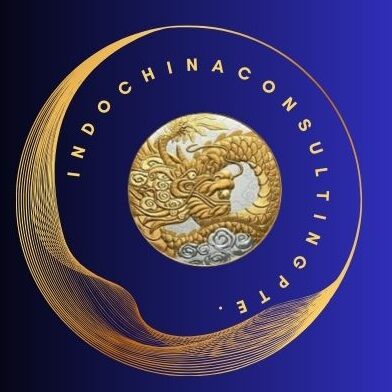Startup success isn’t just about having a great idea—it’s about making great decisions, quickly and consistently. The best founders don’t just rely on gut instinct; they use structured frameworks to navigate uncertainty, prioritize effectively, and move with confidence. The difference between a struggling startup and a thriving one often comes down to the quality and speed of decisions. In the following sections, I outline five powerful decision making frameworks that every founder should master.
But first, if you’d like to get a second (independent) opinion about any matter of your startup or small business, let’s have a short free call to see whether I can add value. This is my Calendly meeting calendar link.
Decision Making Frameworks: #1 – The OODA Loop: Observe, Orient, Decide, Act
Originally developed for fighter pilots, the OODA Loop is a fast, iterative framework for making decisions under pressure. Founders can use it to adapt quickly in unpredictable environments.
- Observe: Gather data from customers, competitors, and the market.
- Orient: Analyze the information in the context of your startup’s goals and constraints.
- Decide: Choose the best course of action based on current insights.
- Act: Implement the decision quickly and be ready to iterate if needed.
For example, when Airbnb faced initial rejections from investors, the founders observed that hosts struggled with low-quality photos. They quickly tested offering professional photography, saw an increase in bookings, and scaled it into a major growth driver.
Decision Making Frameworks: #2 – The Eisenhower Matrix: Prioritizing What Matters
Time is the founder’s most limited resource. The Eisenhower Matrix helps separate urgent tasks from truly important ones.
- Quadrant 1: Urgent & Important (Do immediately)
- Quadrant 2: Not Urgent but Important (Schedule for later)
- Quadrant 3: Urgent but Not Important (Delegate)
- Quadrant 4: Neither Urgent nor Important (Eliminate)
Many founders get trapped in Quadrant 3—responding to emails, and handling minor issues—while neglecting strategic growth efforts in Quadrant 2. Using this matrix ensures focus on what truly moves the needle.
Decision Making Frameworks: #3 – The 80/20 Rule (Pareto Principle): Maximizing Impact
The Pareto Principle states that 80% of results come from 20% of efforts. Founders who master this rule identify and double down on the highest-leverage activities.
- 20% of customers generate 80% of revenue—focus on them.
- 20% of marketing channels drive 80% of leads—invest in them.
- 20% of product features solve 80% of customer pain points—prioritize them.
This principle helps startups grow faster by cutting unnecessary work and focusing on high-impact actions.
Decision Making Frameworks: #4 – First-Principles Thinking: Breaking Problems Down
Instead of copying what competitors do, great founders use first-principles thinking to innovate. This involves breaking a problem down to its core elements and rebuilding a unique solution from the ground up.
Elon Musk used this approach to challenge the assumption that rockets had to be expensive. Instead of accepting existing costs, he broke down materials, manufacturing, and physics, leading to SpaceX dramatically reducing launch expenses.
Founders who apply first-principles thinking avoid making decisions based on assumptions, instead creating novel solutions that disrupt industries.
Decision Making Frameworks: #5 – The 10/10/10 Rule: Making Emotionally Resilient Choices
Founders often face emotionally charged decisions. The 10/10/10 Rule helps separate short-term emotions from long-term impact:
- How will I feel about this decision in 10 minutes?
- How will I feel in 10 months?
- How will I feel in 10 years?
This framework helps avoid reactionary choices based on stress and instead prioritizes decisions that align with long-term success.
Frequently Asked Questions (FAQs)
- How can I make decisions faster as a founder?
Use structured frameworks like the OODA Loop and Eisenhower Matrix to eliminate hesitation and focus on execution. Set time limits for decisions to avoid analysis paralysis. - What if I make the wrong decision?
Mistakes are inevitable. The key is to iterate quickly, gather feedback, and adjust. Use failure as a learning tool rather than a setback. - How do I balance data-driven decisions with intuition?
Use data for validation, but trust intuition for navigating ambiguity. The best decisions combine logic with founder experience and market instincts. - What books or resources can help me improve decision-making?
- “Thinking, Fast and Slow” by Daniel Kahneman – Explores how we make decisions.
- “Principles” by Ray Dalio – Covers systematic decision-making for business.
- “The Lean Startup” by Eric Ries – Focuses on iterative learning in startups.
Resources for Further Learning
- Online Courses:
- Harvard’s Decision Science Course – Covers cognitive biases and strategic thinking.
- Y Combinator’s Startup School – Free lessons on startup decision-making.
- Podcasts & Blogs:
- Freakonomics Radio – Analyzes decision-making in business and life.
- First Round Review – Startup wisdom from top founders and investors.
One of the biggest decisions a founder will ever have to make is if and when to PIVOT. I wrote this blog about that subject and I think you’ll find it valuable – What are the Elements of Successful Business Pivot Strategy
Final Thought:
Startups move at the speed of decisions. Founders who master these frameworks don’t just make better choices—they scale faster, avoid costly mistakes, and build stronger businesses.
What decision-making framework has been most valuable in your journey? Let me know in the comments!
